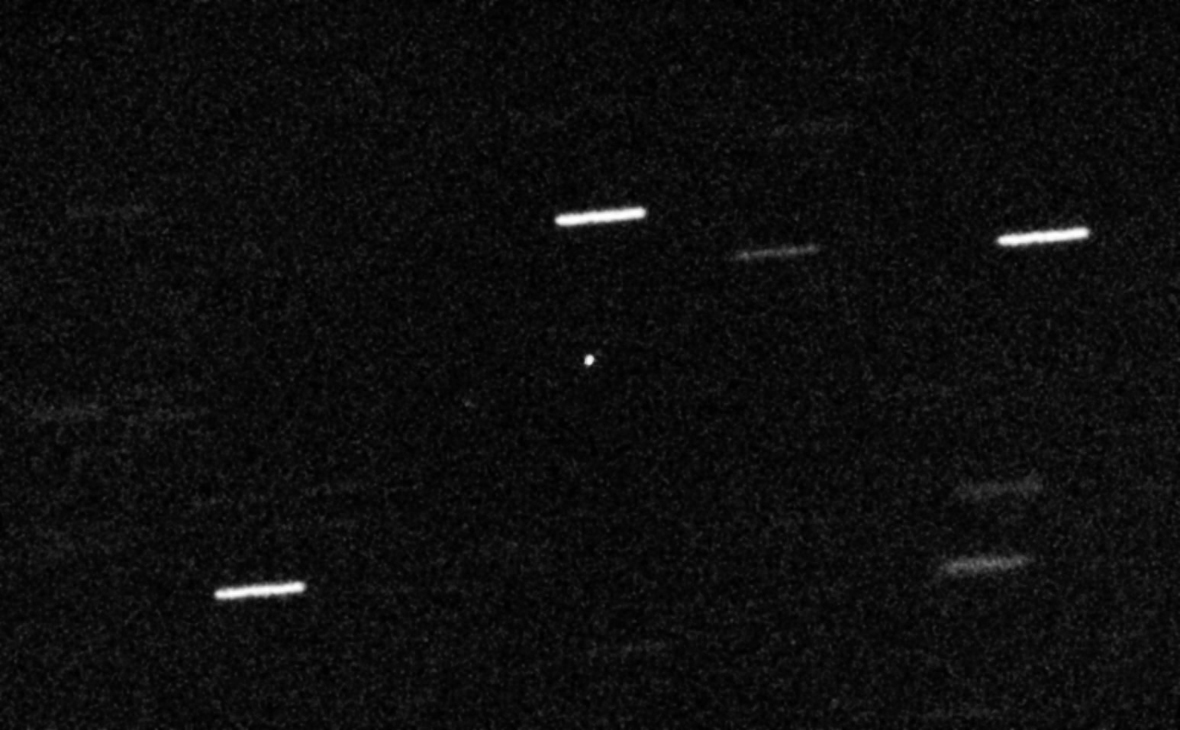
While the details are always in a state of revision, for quite some time now the general consensus among astronomers as to how the solar system and its planets formed involves the accumulation of smaller objects, “planetesimals.” The comets and asteroids we see today, and that have been the primary focus of “Ice and Stone 2020,” are the “leftovers” from this process. As discussed in an earlier “Special Topics” presentation, early in the solar system’s history many of the remaining planetesimals, comets, in particular, were gravitationally kicked out into the far outer solar system where they collectively form the Oort cloud. The comets there are only weakly bound to the solar system, and thus stars passing near or through the Oort Cloud, and sometimes tidal forces from the Galaxy itself, will often eject these comets into interstellar space. At the same time, comets passing through the inner solar system will sometimes be gravitationally perturbed by Jupiter in such a way that they, too, will be ejected out of the solar system and into interstellar space.
We now have good reason to believe that many, if not most or even almost all, other stars have planetary systems of their own. At the same time, it appears that not only is our solar system not a typical planetary system, there really is no such thing as a “typical” planetary system. Nevertheless, there is a legitimate reason to believe that the fundamental processes that form planets are basically the same regardless of the specific details of any given planetary system, and if so, then all the other planetary systems should also be ejecting comets into interstellar space. Indeed, it would seem likely that interstellar space is teeming with comets and other “small bodies” that have been ejected from their respective original planetary systems.
It would also seem likely that, as our sun and our solar system make their travels through the Galaxy, from time to time we would encounter these objects in interstellar space. Various studies done over the years made attempts to calculate how many of these objects we should theoretically be encountering and detecting, with rates ranging from a handful per century to several per year. The detection of such objects would help reinforce, and modify as necessary, our consensus ideas as to how planetary systems form and physical observations of them would provide valuable insights into how the processes are the same and/or different from one system to another.
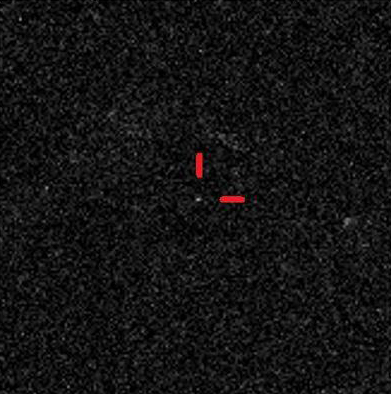
Despite these various calculations, there had not been any confirmed examples of comets or other “small bodies” arriving from interstellar space. Over the years a couple of comets had been suspected of possibly being of interstellar origin based upon seemingly anomalous chemical composition, but gravitationally these objects are still bound to the solar system, and there is no way to determine if they had in fact originally come from interstellar space.
The entire situation changed three years ago when, on October 19, 2017, the Pan-STARRS survey program in Hawaii discovered a fast-moving 20th-magnitude object traveling through Cetus and Pisces. Orbital calculations were a bit tricky at first, but before long it was firmly established that the object was traveling in a distinctly hyperbolic orbit with an eccentricity of 1.2 – clearly indicating an object arriving from interstellar space. It had already passed through perihelion, at the rather small heliocentric distance of 0.255 AU, on September 9, and five days before its discovery it had passed just 0.16 AU from Earth. A backtrack of its trajectory revealed that it had arrived in the solar system from the general direction of the solar apex in the constellation Hercules, which is where we would most likely encounter incoming interstellar objects.
Even though the object appeared stellar on the Pan-STARRS images, the general assumption had been that an interstellar object would be a comet, and it was initially announced as one under the designation C/2017 U1. However, it remained stellar in appearance even in very “deep” images obtained with the European Southern Observatory’s Very Large Telescope, and the designation was accordingly changed to A/2017 U1. Once the object’s interstellar origin was beyond doubt the IAU decided to introduce a new designation prefix, “I,” indicating “interstellar,” and to number these in the same manner as short-period comets. The object accordingly was assigned the designation “1I.”
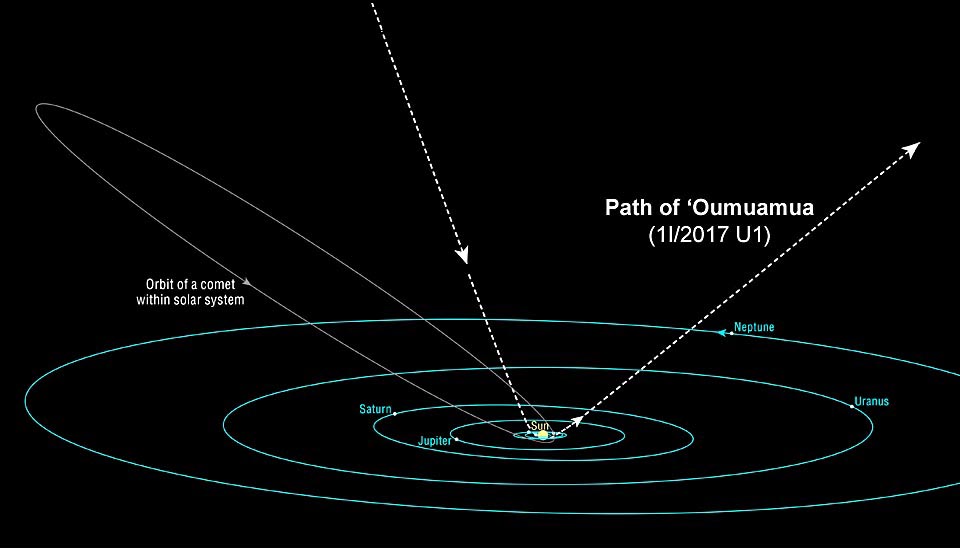
The consensus among the astronomical community is that the object also deserves a name. The Pan-STARRS discovery team proposed, and the IAU naming committee accepted, the name “‘Oumuamua,” from Hawaiian words that essentially translate as “a messenger from afar arriving first.”
There was obviously a high interest among astronomers to obtain as many observations of ‘Oumuamua as possible, but due to its faintness and the fact that it was already receding from the sun and Earth, and fading rapidly, these observations proved to be quite difficult. Indeed, the final observations, obtained with the Hubble Space Telescope in early January 2018 – by which time it had faded to about 26th magnitude – were made only 2½ months after its discovery. During that time it remained entirely stellar in appearance and never appeared as anything other than a point source of light. Photometrically it exhibited a distinctly reddish coloration, suggesting that its surface may be covered with tholins produced by irradiation by cosmic rays, similar to objects in the Kuiper Belt. More surprisingly, ‘Oumuamua exhibited very distinct variations in brightness – up to two magnitudes – over a period of 7 to 8 hours, indicating that it is a very elongated object, with the “best” data suggesting a “cigar” shape with a length of about 400 meters and a cross-sectional width only one-tenth to one-fifth that much. (Some kind of “disc”-shaped structure has also been suggested.) The evidence also suggests that it is not rotating cleanly about an axis but rather is “tumbling” as it travels through space.
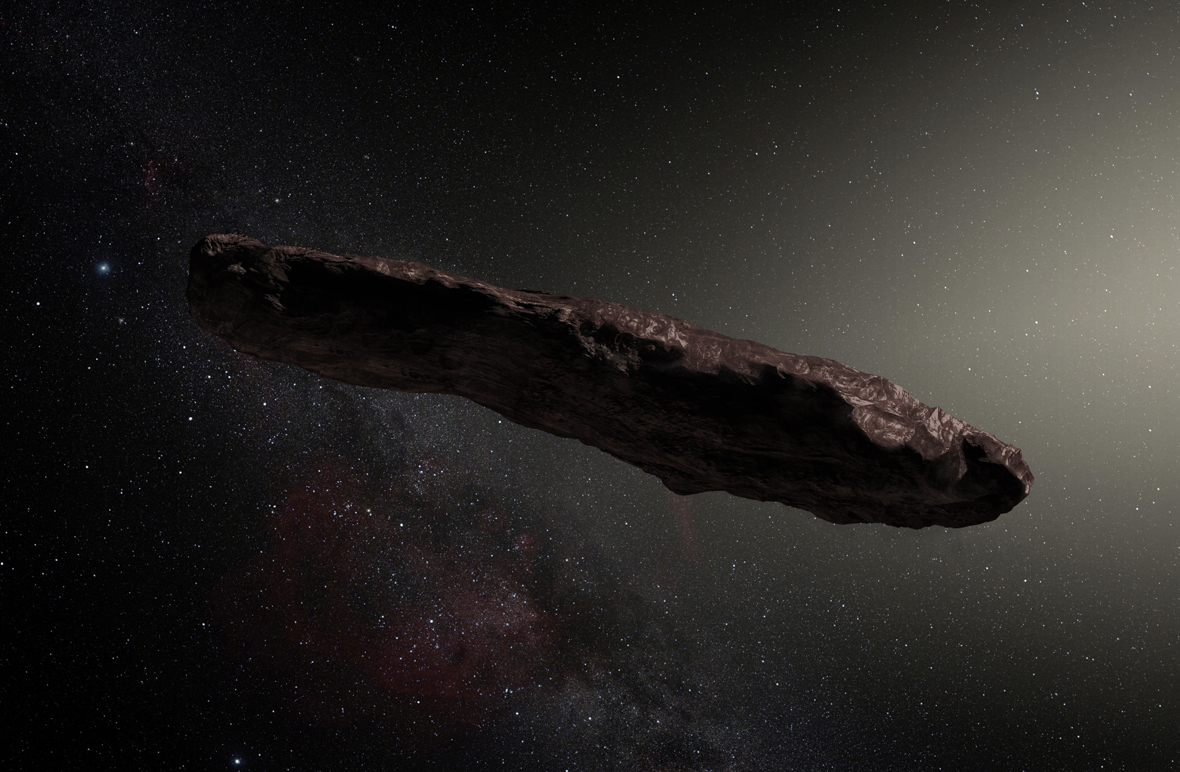
Once all the positional data was analyzed, astronomers determined that ‘Oumuamua had indeed exhibited an acceleration as it traveled through the solar system, analogous to the non-gravitational forces that comets exhibit. This suggests that ‘Oumuamua may actually be a comet, but with an activity level too low to exhibit the physical characteristics normally associated with comets.
‘Oumuamua’s exact physical nature has remained a matter of much speculation ever since its passage through the solar system, and it is most unfortunate that we had such a limited opportunity to obtain meaningful observations of it before it had traveled too far away to detect. Its apparent asteroidal appearance, its very elongated shape, the weak but definite non-gravitational acceleration it exhibited, and its relatively rapid rotation and apparent tumbling are all difficult to reconcile into one coherent picture. Comet scientist Zdenek Sekanina at NASA’s Jet Propulsion Laboratory has suggested that ‘Oumuamua might be a porous, low-density fragment of a much larger interstellar comet that disintegrated as it passed through perihelion. Another, more recent suggestion has been proposed that ‘Oumuamua may be an “iceberg” of frozen molecular hydrogen, possibly escaped from a Giant Molecular Cloud from which stars and planetary systems form, although there are several difficulties with this explanation. On the other hand, while this must be regarded as at least somewhat fanciful, the suggestion has been made that ‘Oumuamua’s behavior is not inconsistent with what would be expected of a thin solar sail – indicative of advanced alien technology. Some astronomers even made attempts with the SETI Institute’s Allen Telescope Array and with the 100-meter radio telescope at Green Bank, West Virginia to see if it might possibly be transmitting signals indicative of an alien civilization, but detected nothing.

Several astronomers have attempted to determine if any “origin stars” for ‘Oumuamua can be identified. Although some potential stars – including Vega, which is in the general direction of the solar apex – have been suggested, nothing conclusive can be determined, in part because the stars’ motions cannot be that precisely pinned down. Meanwhile, following its passage through our solar system, ‘Oumuamua is departing in the general direction of the constellation Pegasus, continuing its journey through the reaches of our galaxy, and leaving us with several mysteries that will probably never be answered.
One of the most important remaining questions was whether or not ‘Oumuamua’s passage through the solar system was a fluke occurrence, or instead was just the first known representative of a large population of interstellar objects that our technology has now progressed to the point of being able to detect. It has certainly begun to stimulate additional efforts to detect interstellar objects, and a year and a half ago Abraham Loeb and Amir Siraj at Harvard University announced that in an examination of 30 years’ worth of fireball records they had found one meteor entering Earth’s atmosphere that may be of interstellar origin. This object, which may have been about 45 centimeters in diameter, appeared over Manus Island in Papua New Guinea on January 8, 2014, and did so with enough velocity to suggest that it came from outside the solar system. Unfortunately, with only the brief records of a meteor that weren’t examined in detail until five years after-the-fact, there is no way that this can be considered conclusive.
The next major event in this endeavor occurred at the end of August 2019, when an amateur astronomer in Crimea, Gennady Borisov, discovered a comet that is traveling on an extremely hyperbolic orbit with an eccentricity of 3.35. This thus becomes the second-known object definitely known to come from interstellar space, and unlike ‘Oumuamua this is clearly a comet. Comet 2I/Borisov, as this comet has since become designated and named, is a previous “Comet of the Week,” and it is discussed more thoroughly in that Presentation.
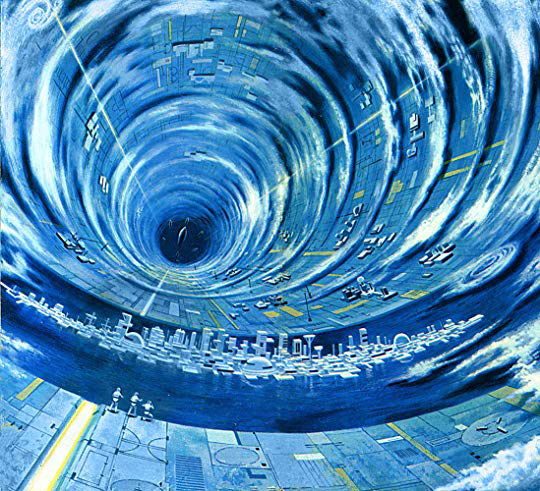
The appearance of two interstellar objects passing through the solar system within a span of two years suggests that there is indeed a non-trivial population of these objects that our solar system is encountering, and that our survey capabilities have now reached the point where we can detect these objects on a consistent basis. With continued improvements in our detection capabilities, and in particular, the 8.4-meter Vera Rubin Observatory in Chile that is expected to become operational within the next one to two years, we may within the not-too-distant future begin detecting enough interstellar objects that we can perform meaningful physical and statistical analyses of them, and in the process gather more insight into our own origins.
‘Oumuamua’s passage through the solar system bore a striking and almost uncanny resemblance to several of the events described within the renowned British science fiction writer Arthur C. Clarke’s 1973 novel “Rendezvous with Rama.” In that novel, an object from interstellar space is discovered passing through the inner solar system, although in that case with enough lead time such that a human crew is able to rendezvous with it and examine it. The fictional Rama was much larger than ‘Oumuamua and was quickly determined to be an artificial object, but like ‘Oumuamua it passed through perihelion and headed back out into interstellar space while completely ignoring Earth in the process. One of the underlying points in “Rendezvous with Rama,” which Clarke ended up exploring in a series of sequels he co-authored with Gentry Lee, is that “the Ramans do everything in threes;” whether or not this is true in real life remains to be determined.
More from Week 43:
This Week in History Comet of the Week Bonus Content Free PDF Download Glossary
Ice and Stone 2020 Home Page


